The Maldives, the pearl of the Indian Ocean
Destination - Indian OceanSun, sand and sparkling blue sea... A thousand islands where you can play at Robinson Crusoe, turquoise lagoons with waters that are incredibly rich in flora and fauna… You are in the Maldives aboard your catamaran, and if you’re not in heaven, you’re close to it!
Logbook
For numerous enlightened amateurs, the Maldives are quite simply the pearl of the Indian Ocean, even better than Polynesia… A heavenly place with an exceptional seabed which has miraculously been spared, to such a point that divers from all over the world meet here to explore. To get to know these marvellous islands, which stretch over nearly 1,000 kilometres, from India to the Equator, there is nothing better than a boat, but paradoxically, although there are several cruising boats locally, there are very few catamarans operating in the Maldives. We found a South African-built Knysna 440 locally, which offers crewed charters. But faced with a growing demand, it appears that other catamarans should soon be joining the fleet and at the same time offering the possibility of bare boat charter. The Maldives consist of an immense stretch of water, sprinkled with 1190 islands, in 26 atolls. Of these islands, only 203 are inhabited, which leaves about a thousand desert islands where you can play at Robinson Crusoe… Enough to start you dreaming… Finally, note that the highest summit in the Maldives is…2.5m high. When you arrive in the Maldives, you will first of all be struck by the beauty of the islands. To such a point that if your flight arrives during the day, ask for a place next to a porthole, to enjoy the truly exceptional show… You won’t have more than a hundred yards to cover from the customs to your catamaran, a Knysna 440, built in South Africa in 2005. The crew, consisting of a skipper and a cook, will be waiting for you, ready to help you discover this earthly paradise.
Itinerary
The crew of the Kingfish will pay attention to your needs and are ready to ensure that you will have the best possible memories of your holiday! This means that, according to everyone’s wishes, the itinerary may vary. It must be said, that with such a marvellous environment formed by the many coral reefs and atolls, it is not difficult to find a good anchorage which is pleasant, comfortable and…deserted! Aboard, in addition to the sailing, you can fish, dive with fins, mask and snorkel, as well as with bottles if you are a qualified diver. Visits to sublime beaches and uninhabited islands will also be on the programme, as well as dinners on the fine sandy beaches… Distances between the islands are quite short (between 10 and 40 miles), but the passages are often sailed at night, to leave the maximum time for other occupations during the day. Of the 1200 Maldive islands, only 200 are inhabited. Certain of them can be visited, but are not necessarily very interesting and do not warrant spending much time on. 80 others are island-hotels, and can be visited if you have arranged in advance. But most of the guests aboard Kingfish prefer to take advantage of being aboard a boat and stay far away from civilisation, enjoying the deserted anchorages. And of course, the essential activity aboard remains diving with fins, mask and snorkel. This area is quite simply fabulous, and the flora and fauna is extraordinary. The atolls have a volcanic base, about 40 – 70 metres deep, where the corals have settled and developed at different depths. Underwater visibility is incredible (between 25 and 30 metres), and just by putting your head underwater, you will find yourself in a fabulous aquarium…
There is no need to have bottles to enjoy a truly magical sight.
Practical info
This archipelago is more than 650km to the South West of Sri Lanka. It stretches over 820km from North to South and over 120km from East to West. The Maldives are made up of 26 atolls with a total of 1190 islands. Eleven atolls are open to tourism and 87 islands have been turned into hotels or ‘resorts’. The capital of the Maldives is Mahé. This incredible town which emerges from the waves, counts 100,000 inhabitants in its 2 km², a third of the total population
Climate: The climate is tropical. There is a dry season, from November to May, and a wet season from May to November. The temperatures fluctuate between 26°C and 32°C throughout the year. During the wet season, it rains almost every day, but rarely for more than an hour, before the sun appears again. The wind is light to moderate during the dry season and blows from the north-east. It is light and from the south west during the wet season and occasionally reaches 25 knots in the squalls. This is why the Maldives is a destination you can discover all the year round, with a slight slack season from June to August.
Getting there: There are no direct flights from Europe or the USA. You will generally have to change at Dubai, Doha or Sri Lanka. Note that the arrival at the only airport in the world to be built on a lagoon is superb. From Paris, 12 – 14 hours flying, with the changes.
Time difference: + 4 h in winter / + 3 h in summer.
Money: the Rufyah, but pay in US dollars.
Formalities: Valid passport.
Vaccinations: none
Language: Divehi and English.
Recommended period: September to May.
Temperature: water 29°, air 35°
Customs: The Maldives is a fairly strict Muslim country. It is forbidden to import alcohol, pork meat…
For more information: www.visitmaldives.com
Destinations offered by
View all the destinations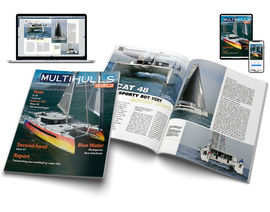
Subscribe and get 8 issues a yearfor just $39.90
subscribeClassified ads
View classified adsWoods Flica 35 reduced for quick sell
- Location :
- Groningen, Netherlands
- Year :
- 1994
 Discover the 2025 winners!
Discover the 2025 winners! 
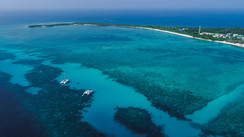
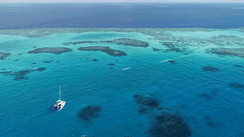
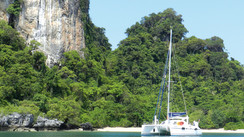
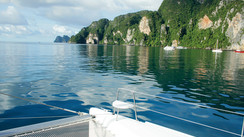
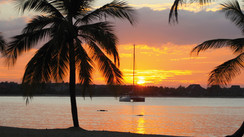
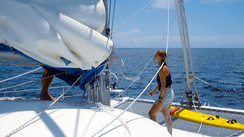







What readers think
Post a comment
No comments to show.